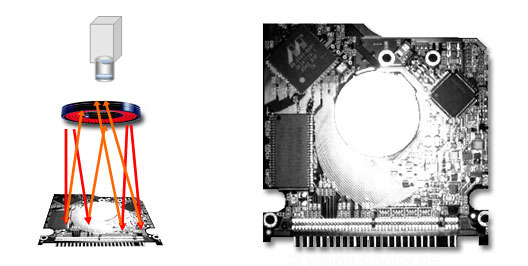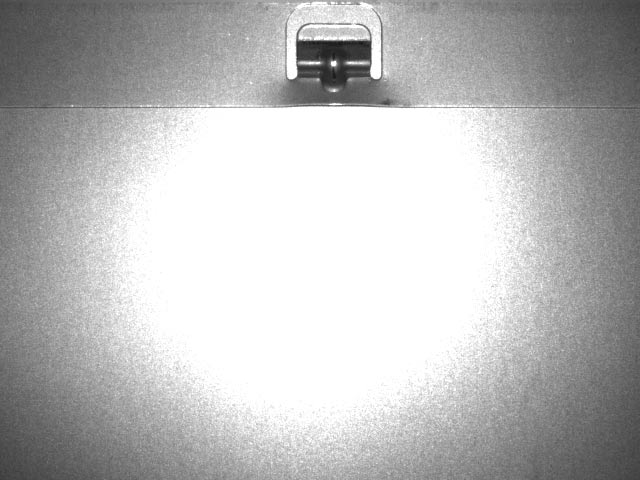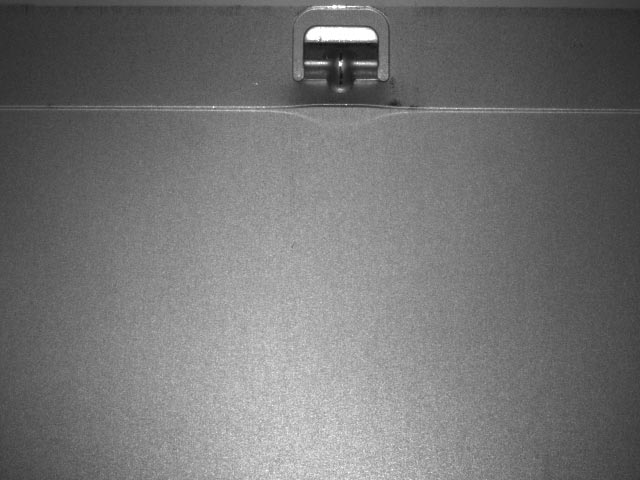Direct incident light
This simple lighting technique can be used for non-reflective materials which strongly scatter the light due to their matte, porous, fibrous, non-glossy surface. Direct incident light can be any type of extensively beaming lights. Ideally, a ring light is chosen for smaller illuminated fields, that can be arranged around the lens. Shadows are avoided to the greatest extent due to the absolutely vertical illumination. Halogen lamps and large fluorescence illumination can be used, too.
Functional principle of direct incident light
 |
Attention: On smooth, reflective surfaces, interfering reflexes are often produced which can significantly move across the entire part in case of smallest position and angle alterations!
Advantages of direct incident light
- Direct incident light illuminations are inexpensive and do not require any complicated design.
- All types of lighting such as halogen, fluorescent or LED lighting can be used.
- Ideal to illuminate large areas. Several lights can be combined, too.
- Direct light is usually bright because of a directly radiating surface with low beam angle and strong reflection.
Prevention of disturbing reflections in the direct incident light
- The principle of vertical illumination from above often generates interfering reflections on the surface of the component. By slightly tilting the illumination, total reflection can be avoided. Shadows are possible in case of slightly tilted illumination if the component has a spatial depth.
- The use of polarised light and a polarisation filter on the lens can possibly suppress interfering reflections. However, much light is suppressed in this way.
Direct front light
frontlight reflection on matt metal finish, perpendicular illuminated
Tilted light or object
Direct frontlight on matt metal finish, tilted by 10 degrees









